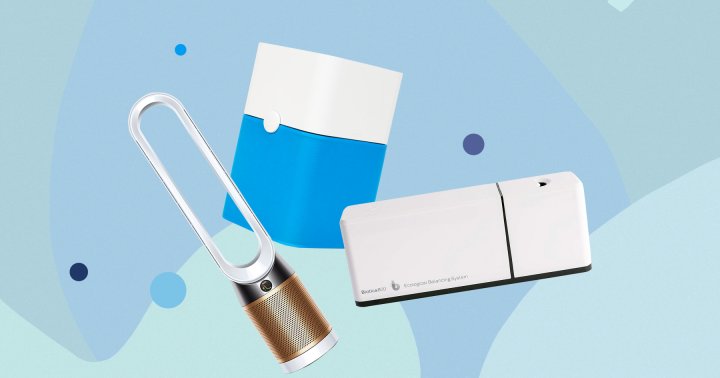HEPA Filter Reduces Indoor Airborne Traffic Particles, Improves QoL in Children With Asthma - Pulmonology Advisor
HEPA Filter Reduces Indoor Airborne Traffic Particles, Improves QoL in Children With Asthma - Pulmonology Advisor |
| Posted: 24 Nov 2019 04:56 PM PST  At-home high-efficiency particulate air (HEPA) filtration reduces indoor concentrations of airborne traffic particles and is associated with improvements in quality of life (QoL) measures in children with asthma, study results published in Indoor Air suggest. The Cincinnati Childhood Allergy and Air Pollution Study (CCAAPS) cohort was used to recruit children between the ages of 10 and 16 years with a physician diagnosis of asthma. A total of 43 children with asthma were included in the study if they lived in a home with high traffic-related airborne pollutant (TRAP) exposure. Patients were randomly assigned to either an at-home HEPA filter or a placebo "dummy" air purifier for a 1-month period. Following the first month, patients underwent a 1-month washout period and then crossed over to the alternate treatment for another month. The researchers compared samples of airborne particles in each child's bedroom 48 hours before and 48 hours after the HEPA and placebo periods. In addition, asthma control (Asthma Control Questionnaire [ACQ]) and quality of life (Mini Asthma Quality of life Questionnaire [AQLQ]) measures were assessed before and after each treatment. Significant reductions were observed in several indoor concentrations of traffic air particles from pre-HEPA to post-HEPA but not with the placebo air purifier. Using the HEPA filter in patients with impaired QoL at baseline, there were greater reductions in particulate matter <2.5 μm (8.0 μg/m3 to 4.8 μg/m3), black carbon (0.3 μg/m3 to 0.05 μg/m3), ultraviolet absorbing particulate matter (2.3 μg/m3 to 0.7 μg/m3), and fungal spores (149 μg/m3 to 132 μg/m3). Similar improvements were observed in patients with poorly controlled asthma at baseline. There were also significant improvements in ACQ scores (1.3 to 0.9; P =.003) and AQLQ scores (4.9 to 5.5; P =.02) with the HEPA filter in patients with poorly controlled asthma and lower baseline QoL. Study limitations included the small sample size, the lack of assessment of allergen sensitization, and the short treatment period. The investigators wrote that their "study suggests that significant public health benefits could be derived from reducing personal TRAP exposure," considering the high costs associated with "developing new biologic drugs for poorly controlled asthma with less consideration and evaluation of environmental inventions." Reference James C, Bernstein DI, Cox J, et al. HEPA filtration improves asthma control in children exposed to traffic-related airborne particles [published online November 19, 2019]. Indoor Air. doi:10.1111/ina.12625 |
| Here Are The Signs You May Need An Air Purifier + 6 That'll Do The Job - mindbodygreen.com Posted: 05 Nov 2019 12:00 AM PST  To buy an air purifier or not to buy an air purifier? That's the question for those of us who know that indoor air is often more polluted than outdoor air but aren't sure what that really means for our home. Many experts are in agreement that not everyone needs to shell out the money for a top-of-the-line air purifier. Simply opening the windows and staying on top of your cleaning routine should be enough to keep your space in good shape. But if you suffer from allergies, live in a new construction building (more on that later), or have a pre-existing respiratory condition, you may want to be more diligent about air quality. It's also important to consider the location of your home: "If you live in a polluted city, you'll want to filter out ozone, nitrogen oxide, and VOCs," Shelly Miller, Ph.D., a professor at the University of Colorado–Boulder who specializes in air pollution, told mbg over the summer. Those who live in areas affected by wildfires, like the ones California is experiencing, should also consider investing in a filter since tiny smoke particles can travel far and pose a threat to health, according to the EPA. This tiny particulate matter, as well as VOCs, flame retardants, phthalates, sulfur dioxide, and nitrogen oxide are some of the most important things to monitor at home if you're worried about air quality, Miller explained. She trusts air purifiers with a tried-and-true HEPA filter to do the job of sifting most of them out. The one downside of buying a purifier is it can only filter a set amount of square footage. So you'll want to put it in the room where you spend the most time—likely the bedroom. "A recent Harvard study found that we spend a third of our life in our bedrooms, so keeping the air clean in that room is particularly important," Jake Read, an advanced design engineer at Dyson, tells mbg. "The bedroom is also where dust mite allergens are most common as they feed off the dead skin cells that people shed when they sleep," adds Staub from BetterAir. If you check off some of these boxes, here are six high-rated filters and purifiers that can clear the air. |
| You are subscribed to email updates from "bedroom air purifier" - Google News. To stop receiving these emails, you may unsubscribe now. | Email delivery powered by Google |
| Google, 1600 Amphitheatre Parkway, Mountain View, CA 94043, United States | |
Comments
Post a Comment